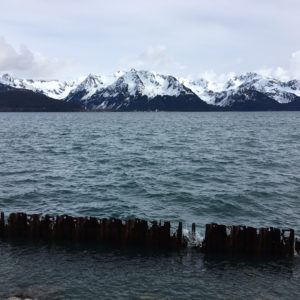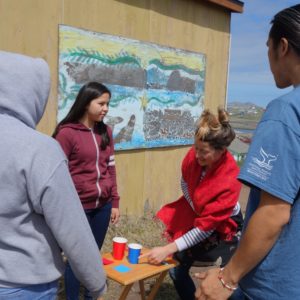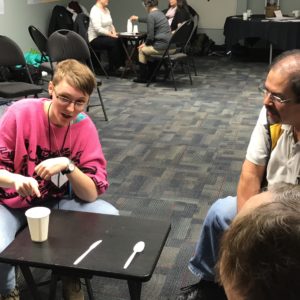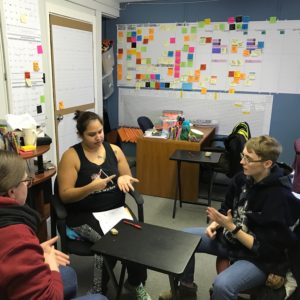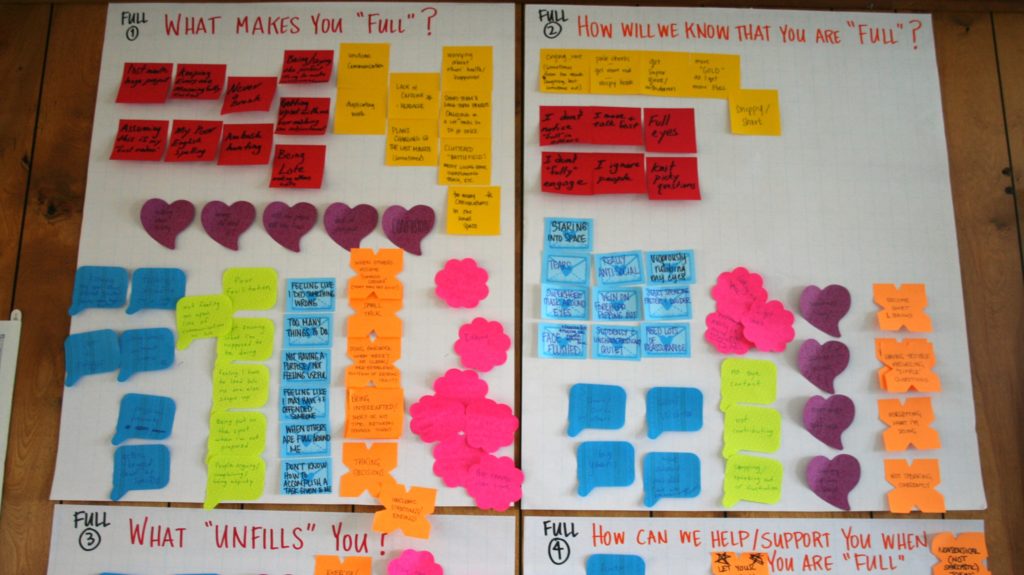
The “What makes you full?” activity is invaluable for a group that will be working closely for a period of time. Past intern Robyn introduced it to Evan and Susanna, and they introduced it to this year’s visiting team, who are here on St. Paul Island for the summer of 2017.
What do we mean by ‘full’? We are talking about brains – that state when your brain is totally full, and you simply can’t learn anything new. In WAYK, we want to avoid overfull brains and we want to recover when it happens. Furthermore, since WAYK takes a cooperative and not competitive approach, we want to support each other in taking care of our brains.
People experience events differently – a boisterous group activity might be really fun for you, but filling for me. How would you know that? How could you tell if I was full? How would you know what would help me? This activity helps to understand how.
Step 1 of the activity: Put four big pieces of poster paper up on the wall. At the top of each paper, write one of these four questions:
- What makes you “full”?
- How will we know that you are “full”?
- What “unfills” you? [In other words, what relaxes you and your brain?]
- How can we help/support you when you are “full”?
Step 2: Invite people to write down their answers for each question. Ideally each person should write their answers using their own color post-its (e.g. my color is neon green). Give people enough time to reflect and write silently, before putting their post-its on the paper.
Step 3: Invite each person to come up in front of the group and explain what they have added.
Below is a sampling of answers from our own group. You can see how different answers can be.
Things that make us full:
- Being put on the spot without preparation
- Having my ideas rejected quickly
- Rushing
Ways to know that we are full:
- I ignore people
- Big yawns
- Snippy/short
Things that unfill us:
- Time alone
- Going on a walk
- Listen to a podcast
Ways to help each other when we are full:
- Give me some space
- Check in with me
- Suggest an easy cooking project
After each person speaks, invite clarifying questions.
Step 4: Leave the poster papers up, so that people can refer to them.
Step 5: Return to the poster papers as a group when it feels appropriate. This may be halfway through your time together. Do people want to add or change what they have written, based on observing their own behavior? Do team members have additions for each other that they have noticed?
Thanks to this activity, I know more about my colleagues. I am more aware of our differences. I am more likely to know when people are overwhelmed, and I can understand when they are taking steps to relieve the pressure. Instead of having to ask how to support them, I can refer to what they have already said. I also notice more about myself – when I stop wanting to make eye contact with colleagues, or I am speaking curtly, I know it’s time to plan a hike or some other exercise, or connect with a friend. In short, this exercise has been very useful.
I hope this is useful for your purposes, too.
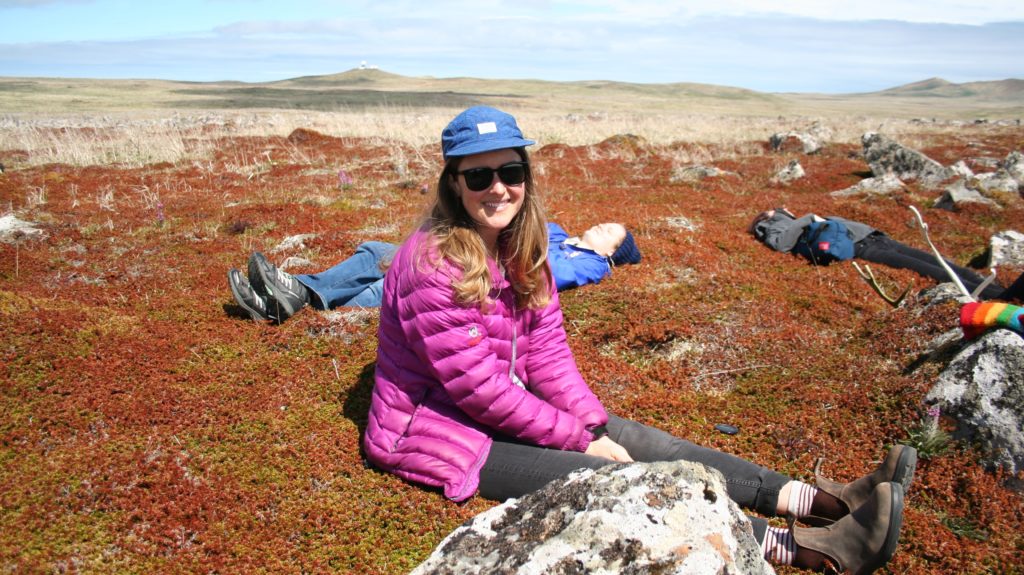
Post authored by Mary.

